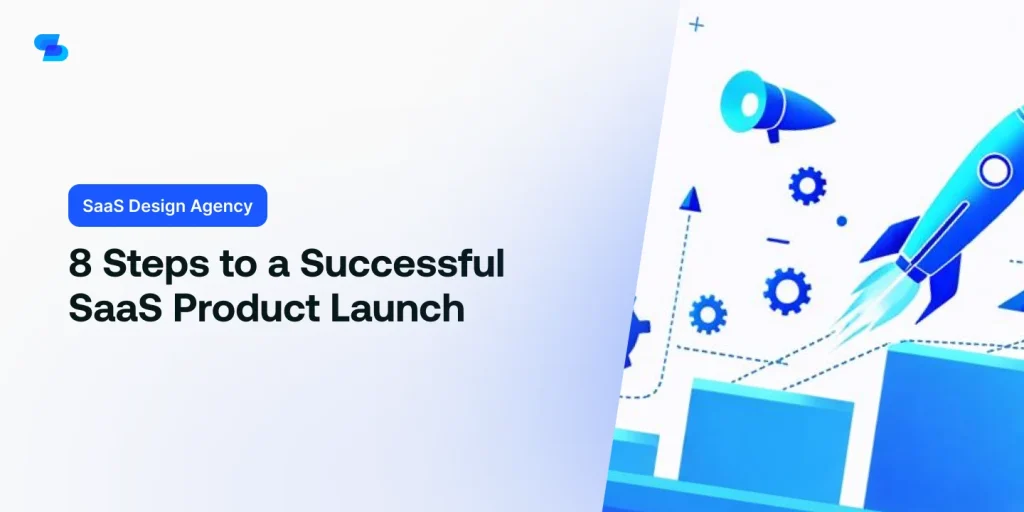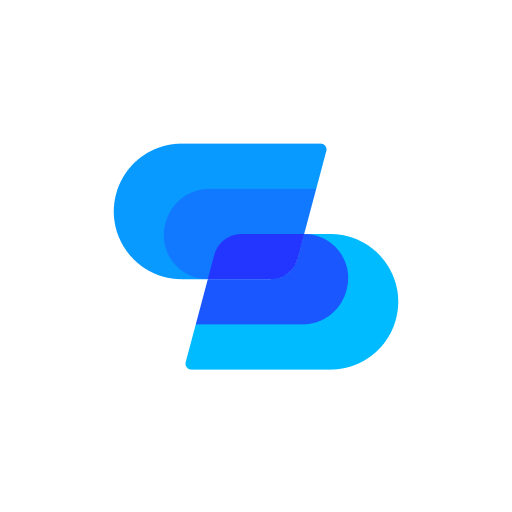You’ve got a SaaS product ready to launch, but are you truly prepared? The eight-step framework isn’t just another checklist—it’s your roadmap to success in a cutthroat market. From pinpointing your audience to crunching the numbers, each step is essential. But here’s the kicker: most startups fumble at least one of these steps, often with disastrous consequences. Don’t be fooled by the simplicity; mastering this process is anything but easy. The real question is: can you navigate these treacherous waters and come out on top? The answer might surprise you.
Define Your Target Audience
Before you plunge into development, nail down who’ll actually use your SaaS product. Don’t fall into the trap of thinking everyone’s your customer – they’re not. Narrow it down. Who’s losing sleep over the problem you’re solving?
Dive deep into demographics, but don’t stop there. Psychographics are your secret weapon. What drives your ideal user? What keeps them up at night? What’s their favorite podcast? Get specific, even borderline creepy. The more you know, the better you can tailor your product and marketing.
Create user personas, but make them real. Give them names, faces, and backstories. What’s Dave the overworked HR manager’s biggest fear? How does Sarah the startup founder take her coffee? These details matter.
Now, challenge your assumptions. Are you really targeting the right people? Maybe your ideal user isn’t who you think. Be open to surprises. Talk to potential users. Listen more than you speak. Their insights might just flip your entire strategy on its head.
Conduct Thorough Market Research
Your market’s secrets are begging to be uncovered, so grab your shovel and start digging. Don’t just scratch the surface; plunge into the depths of your industry’s underbelly. Analyze your competitors with a hawk’s eye. What’re they doing right? Where are they falling short? These gaps are your golden opportunities.
Dive into data like it’s your lifeline. Crunch numbers, dissect trends, and decode patterns. Your target audience’s behaviors and preferences are hidden in plain sight. Use surveys, interviews, and focus groups to extract raw, unfiltered insights. Don’t shy away from uncomfortable truths; they’re often the most valuable.
Look beyond your immediate market. What’s happening in adjacent industries? Are there untapped crossover potentials? Keep your finger on the pulse of emerging technologies and shifting consumer habits. They could reshape your entire landscape overnight.
Don’t forget the macro view. Economic indicators, regulatory changes, and global events can impact your SaaS product’s success. Stay ahead of the curve by anticipating these shifts. Remember, thorough market research isn’t a one-time task; it’s an ongoing commitment to staying relevant and innovative.
Develop a Unique Value Proposition
You’ve done your homework, now it’s time to strike gold.
Scrutinize your market research to uncover hidden needs and pain points that your competitors haven’t addressed.
Craft a razor-sharp value proposition that slices through the noise and grabs your target audience by the collar, making them wonder how they ever lived without your SaaS solution.
Identify Market Gaps
Carving out a distinctive niche isn’t just smart—it’s survival in the crowded SaaS landscape. To identify market gaps, you’ll need to become a relentless data hound. Dive deep into industry reports, customer feedback, and competitor shortcomings. Don’t just skim the surface; excavate the hidden pain points your rivals have overlooked.
Ask yourself: What’s the one thing customers desperately want but can’t find? That’s your golden ticket. Maybe it’s seamless integration, unparalleled customization, or lightning-fast performance. Whatever it is, make it your north star.
But here’s the kicker: gaps aren’t always obvious. Sometimes, you’ll need to create them. Disrupt the status quo. Challenge industry norms. Be the SaaS rebel who dares to think differently.
Remember, a gap isn’t just about features—it’s about solving problems in innovative ways. Maybe your gap is stellar customer service in an industry known for automated responses. Or perhaps it’s bringing enterprise-level tools to small businesses at an affordable price point.
Don’t be afraid to niche down. In SaaS, the riches are in the niches. Own your space, dominate it, and watch your product soar.
Craft Compelling Messaging
Words are weapons in the SaaS battleground—wield them wisely to craft a value proposition that cuts through the noise. Your message isn’t just fluff; it’s your battle cry. Distill your product’s essence into a razor-sharp statement that slices through competitors’ claims.
Start with your customer’s pain. What keeps them up at night? Now, how does your SaaS soothe that ache? Be specific. Don’t just promise ‘increased productivity’—quantify it. ‘Slash project timelines by 30%’ packs more punch.
Differentiate or die. What makes you unique? If you can’t answer in five seconds, neither can your prospects. Maybe you’re the only AI-powered solution in your niche, or perhaps your customer service is legendary. Whatever it is, own it.
Test your message ruthlessly. A/B test headlines, tweak landing pages, and refine your pitch until it resonates. Remember, your value proposition isn’t set in stone—it’s a living entity that evolves with your product and market.
Create a Compelling Marketing Strategy
A killer marketing strategy isn’t just nice to have—it’s your SaaS product’s lifeline in a sea of competition. You’re not here to blend in; you’re here to disrupt. Start by identifying your unique selling proposition (USP). What makes your product the solution users can’t live without? Once you’ve nailed that, it’s time to get tactical.
Embrace content marketing, but ditch the fluff. Create value-packed blog posts, whitepapers, and case studies that showcase your expertise. Leverage social media to build a community, not just a follower count. Engage, don’t just broadcast.
Consider growth hacking techniques. Run A/B tests on everything from email subject lines to landing page designs. Use data to drive decisions, not gut feelings.
Don’t underestimate the power of partnerships. Collaborate with complementary businesses to expand your reach.
And remember, word-of-mouth is still king. Incentivize referrals and turn your users into your biggest advocates.
Optimize Your Pricing Model
You’re leaving money on the table with a one-size-fits-all pricing strategy.
Embrace tiered pricing to capture value across different customer segments, from budget-conscious startups to enterprise giants.
Don’t just guess at prices; adopt a value-based approach that aligns your fees with the tangible benefits your SaaS delivers to customers.
Tiered Pricing Strategies
Three tiers can transform your SaaS pricing from guesswork to goldmine. Ditch the one-size-fits-all approach and embrace the power of choice.
Your basic tier? Make it irresistible. Hook users with core features at a price that screams ‘try me.’ It’s your foot in the door, your chance to prove value.
Mid-tier is where you’ll make your bread and butter. Pack it with features that solve real problems. This is the sweet spot for most users – not too basic, not too pricey. It’s the Goldilocks of your pricing strategy.
Now, the premium tier. This isn’t just about more features; it’s about status. Make it exclusive. Offer white-glove service, priority support, or advanced analytics. Price it high – you’re not selling to everyone here. You’re catering to power users and enterprises who crave the best.
Value-Based Pricing Approach
Beyond tiers, your pricing’s true power lies in aligning it with the value you deliver. Don’t just slap a number on your product; dissect its worth to your customers. What problems do you solve? How much time or money do you save them? Quantify it.
Value-based pricing isn’t about what you think you’re worth. It’s about what your customers perceive as valuable. Dive deep into their world. Understand their pain points, aspirations, and bottom lines. Then, price accordingly.
Don’t be afraid to charge premium rates if you’re offering premium value. Cheap doesn’t always win. In fact, it can backfire, making your product seem inferior. Remember, price is often a proxy for quality in the minds of buyers.
Test different price points. Use A/B testing to gauge customer reactions. Don’t set it and forget it. Your pricing should evolve as your product and market do.
Lastly, communicate your value proposition clearly. If customers don’t understand why you’re worth it, they won’t pay. Make your pricing a reflection of your confidence in your product’s ability to deliver results. It’s not just about money; it’s about respect for your solution’s impact.
Build a Strong Product Team
At the heart of every game-changing SaaS product lies a dream team of innovators, hustlers, and visionaries. You need these mavericks to breathe life into your digital brainchild. But don’t just hire; curate.
Seek out the unicorns – those rare breeds who blend technical prowess with business acumen. Your developer should grasp market dynamics, your marketer should speak code. Cross-pollination is key.
Diversity isn’t just a buzzword; it’s your secret weapon. Different perspectives breed innovation. Hire people who challenge you, not mirror you. Embrace the friction; it’s where breakthroughs happen.
Culture fit? Overrated. Opt for culture add. You want team members who bring something new to the table, not just nod along.
Invest in T-shaped professionals – deep expertise in one area, broad knowledge in many. They’re your Swiss Army knives in a world of constant pivots.
Don’t forget emotional intelligence. In the pressure cooker of a product launch, you need cool heads and warm hearts.
Implement Effective Customer Support
Your dream team’s assembled, but without exceptional customer support, they’re building castles in the sand. Customer support isn’t a luxury; it’s the lifeblood of your SaaS. Neglect it, and watch your hard work crumble.
Ditch the archaic ticketing systems. They’re slow, impersonal, and about as useful as a chocolate teapot. Instead, embrace real-time chat support. It’s instant, it’s personal, and it shows you give a damn. Train your support team to be problem-solvers, not script-readers. They should know your product inside out and be empowered to make decisions on the fly.
Create a knowledge base that doesn’t suck. FAQs, tutorials, and troubleshooting guides should be clear, concise, and actually helpful. Remember, most users would rather solve issues themselves than talk to a human.
Don’t just react to problems; anticipate them. Use data to predict common issues and proactively reach out to users. It’s not hand-holding; it’s smart business.
Measure and Analyze Key Metrics
Gut feelings won’t cut it in the SaaS world; you need cold, hard data to steer your ship. Embrace metrics like they’re your new religion. Start with the holy trinity: Customer Acquisition Cost (CAC), Customer Lifetime Value (CLV), and churn rate. These aren’t just numbers; they’re your product’s essential signs.
Don’t stop there. Immerse yourself in user engagement metrics. How often do customers log in? Which features are they ignoring? This isn’t stalking; it’s survival. Your product’s usage patterns are a goldmine of insights. Exploit them.
Revenue metrics are your report card. Monthly Recurring Revenue (MRR) and Annual Recurring Revenue (ARR) tell you if you’re growing or dying. Net Revenue Retention (NRR) shows if existing customers love you or are plotting their escape.
But here’s the kicker: don’t just collect data. Analyze it obsessively. Look for patterns, correlations, and anomalies. Use A/B testing to validate hunches. Remember, in SaaS, ignorance isn’t bliss—it’s bankruptcy. Your metrics are speaking. Are you listening?
To Wrap Up
You’ve got the roadmap, now get moving.
Launch your SaaS product with swagger and precision. Don’t just follow these steps—own them. Your audience is waiting, your market’s ripe, and your value proposition’s killer.
So what’s stopping you? Build that dream team, nail your pricing, and watch those metrics soar.
Remember, customer support isn’t just a step—it’s your lifeline.
Now go disrupt the market. Your SaaS success story starts today.

